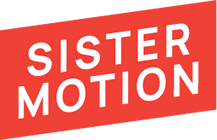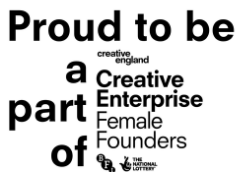Since we put out our call on International Women’s Day we’ve been speaking to talent all over the world – people from different departments at different stages of their careers all with their own stories of how they earned their place in our industry. Alongside the common themes of hard graft and sacrifice, impostor syndrome came up again and again.
This month we speak to Vicky Dyson PhD – an expert coaching psychologist who’s worked with executives from the likes of Google, Facebook and Linkedin – to lend some insight into impostor syndrome. How can each of us move past self-doubt and introspection to grab hold of those opportunities we’ve worked so hard to create?
“I feel too awkward to speak up.”
”They’ll think my ideas aren’t good enough. They’re probably right!”
“I’m the only woman here, and everyone’s judging me.”
“I’d better work extra hard to prove myself.”
“I feel like a fraud and I’m worried I’ll get found out.”
Ever experienced chronic self-doubt and feelings of inadequacy, even in the face of evidence that you’re actually good at what you do? If so, it could be impostor syndrome.
- Impostor syndrome is incredibly common, especially amongst creatives. Its key elements include:
- Feeling like a fraud, with a fear of being caught out at any moment.
- Comparing yourself to others and feeling you fall short.
- Putting your accomplishments down to luck rather than merit.
- Feeling inadequate, not owning your achievements or playing them down.
Experiencing impostor syndrome can lead us to react in self-sabotaging ways, such as avoiding situations where we’ll feel exposed or judged, not sharing ideas, not putting ourselves forward for opportunities, procrastinating, putting in more effort than required, constantly worrying about mistakes and seeing any feedback as criticism.
Not surprisingly, impostor syndrome runs rampant among creatives. Recent research found that 87% of people working in the creative industry have experienced impostor syndrome – the highest of any in the study (Access Commercial Finance, 2018). By its very nature, the creative industry is a breeding ground of self-doubt. You’re creating something that’s going to be judged – people are going to like it or not like it – in a competitive environment where everyone wants their ideas to be the best. It can be brutal.
If you work in a male-dominated area of production, you may feel impostor syndrome acutely. You might feel like the odd one out, like you don’t belong, that your male counterparts are questioning why you’re there, and you may well be assuming the responsibility to represent ALL women. And if you work for yourself it can be worse, with 84% of entrepreneurs and small business owners also reporting feeling impostor syndrome (Kajabi, 2020).
Voiceover artist Sara Starling is a member of the Sister Motion collective who, despite 30 years of experience, has suffered from impostor syndrome.
“Creatives can wake up unemployed daily”, she says. “Sometimes the diary fills up before you’ve had time to turn around, other days are slower. No matter how many years of experience you have, how many big brands you’ve worked with or how many awards you’ve won, so often that gremlin still lurks, waiting to pounce.”
But just because the gremlin is there, it doesn’t mean you’re stuck with it. Overcoming impostor syndrome is about examining our inner narrative – what Dr Brené Brown calls the “Story I’m Telling Myself”, or SITM.
Our SITM can be full of predictions of terrible outcomes, mindreading, fear of negative judgment, perfectionist demands on ourselves, what-ifs and lots of false information about why we’re the wrong person for the job. It can be influenced by crappy things that people have said to us, but we don’t have to believe those messages and absorb them as truths. Nor do we have to believe our own thoughts that creep in and feed the self-doubt.
Change your narrative
Kicking the impostor syndrome gremlin to the kerb starts with three steps:
1 Learn to notice the content of your SITM. What are the assumptions and faulty thinking in the story you’ve created? How does your SITM make you feel and behave? How is it holding you back from what’s important to you?
2 Create a new SITM. The new SITM should be one that contradicts self-doubt, a story that encourages you to be vulnerable and courageous, and enables you to grasp opportunities instead of running away from them.
3 Populate your new alternative SITM with content. Spend time reflecting on your achievements and attributes to serve as a reminder of how good you are. Bring this info front of mind. Put it on your radar as evidence to draw on in moments of self-doubt to help you to blow holes in your unhelpful old SITM
When Sara was experiencing self-doubt, she created a more helpful SITM that encouraged her to grasp an important opportunity to coach a colleague for a BBC job.“I reminded myself of all the concrete, relevant experience I had – decades of it. I knew how to tell a story, I knew the difference between a podcast and a radio programme, I knew how the BBC worked, I knew what made a great listen. I’d coached people in my job as an announcer. So I shut that annoying voice of doubt down, welcomed the adventure and said yes!”
The outcome? “The series was a massive success,” Sara says. “The presentation skills of the senior journalist were praised in the press and the editor asked me to give a talk to the entire production team. And do you know what? I loved every minute of it.”
Tackle self-doubt
Beyond reinvigorating your SITM, there’s more work you can do. Use these strategies to put self-doubt in its place.
4 Learn to talk back to yourself. When you’re feeling doubtful about your capabilities, quickly argue back by saying, “That’s not true because….” For example, when your inner voice says, “I’m not the right person, I’ll be exposed as not knowing enough, it’s too risky”, then dispute that by saying, “That’s not true because when I worked on project X I was worried about my experience but was successful. I’m really resourceful and good at collaborating so I was easily able to find out what I didn’t know and who to engage with”.
5 Fight the fear and pursue the good feelings. Ask yourself, “How will I feel if I do this and how will I feel if I don’t?” Feelings are strong motivators towards and away from certain behaviours. Fear might be keeping you from doing something; when you don’t do it you might feel relief, but also disappointment, frustration, annoyance, guilt and so on. In other words, not doing it can mean lots of negative emotions. But if you go past the fear and say yes, you can also experience pride, happiness, optimism and success. Focus on the positive feelings and dangle them like a tasty carrot.
6 Remember you’re not alone. Note the statistics and remind yourself that lots of other people feel the same. It took me a while to realise that many of my moments of self-doubt came when I was around people who seemed confident and self-assured. I assumed I was the only one who felt unworthy, particularly when I worked in IT and was often the only woman in the room. When I studied the stats and realised there was a strong chance that most people in the room felt the same, it was liberating.
7 Practice running toward those opportunities that stare you in the face. Ask yourself, “Why go on the journey to build a profession for myself then let others take the opportunities because I’m feeling insecure?!” It’s easy to complain about lack of opportunities and then not go for them when they arise. We all owe it to ourselves to seize the chances we’re given and use them to build our own success.
In my work as a coach I love helping people overcome impostor syndrome. Having previously worked in IT and academia, I know how it feels to experience it and I know how it feels when you overcome it. And you can overcome it. But overcoming impostor syndrome doesn’t mean never experiencing those feelings of self-doubt again. It’s about learning strategies to move quickly out of that mindset and into one that enables you to bravely take your chances and not hold yourself back.
Be vulnerable. Be courageous. You’ve got this!
As a chartered psychologist and coach, Dr Vicky Dyson specialises in helping clients to overcome impostor syndrome and perfectionism, enabling them to feel more confident and fulfilled in their chosen profession. To arrange a free chat to find out how coaching could help you, email her at [email protected] Find out more about Vicky on LinkedIn
Thanks to Sara Starling for sharing her story. Find out more about Sara’s work at www.sarastarling.co.uk
Additional Resources
Wondering if you’re experiencing impostor syndrome? Take the test.
Dr Valerie Jones is the world expert on IS. Visit her website to find more articles and a free chapter of her book’ The Secret Thoughts of Successful Women.’
Check out The Call To Courage with Dr Brené Brown on Netflix, where she introduces the concept of the SITM and talks about the importance of being vulnerable and courageous in order to get what you want in life.


